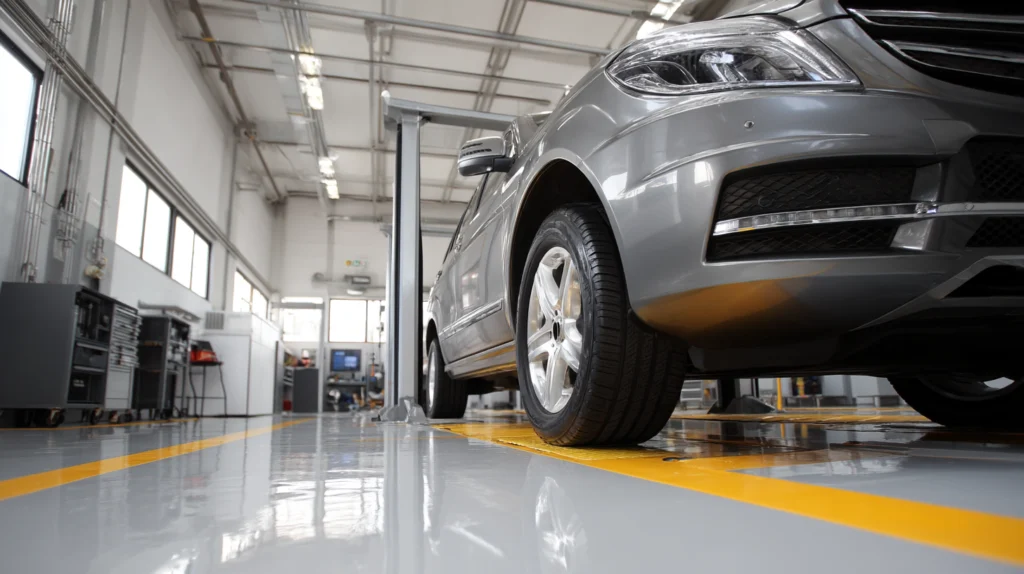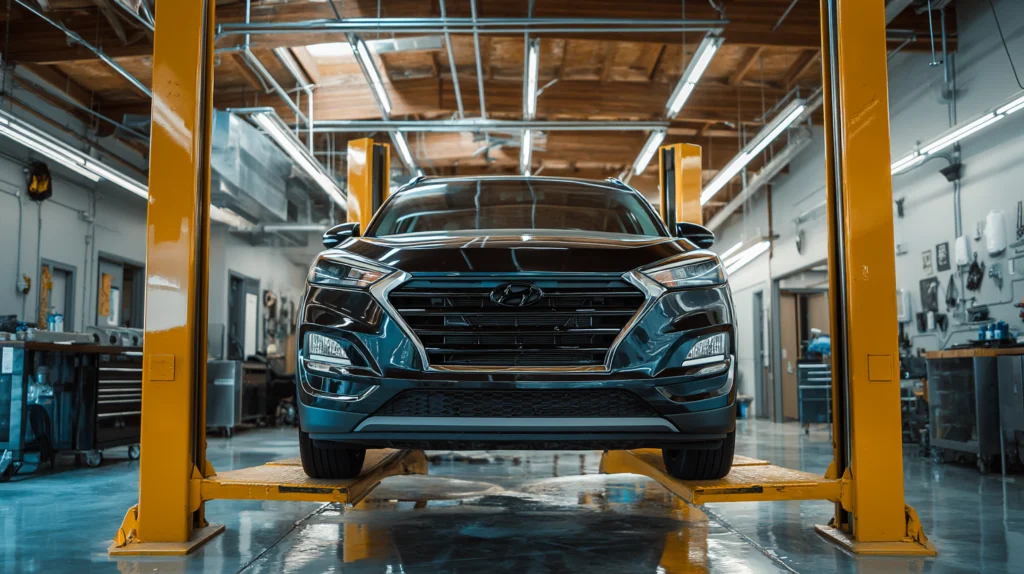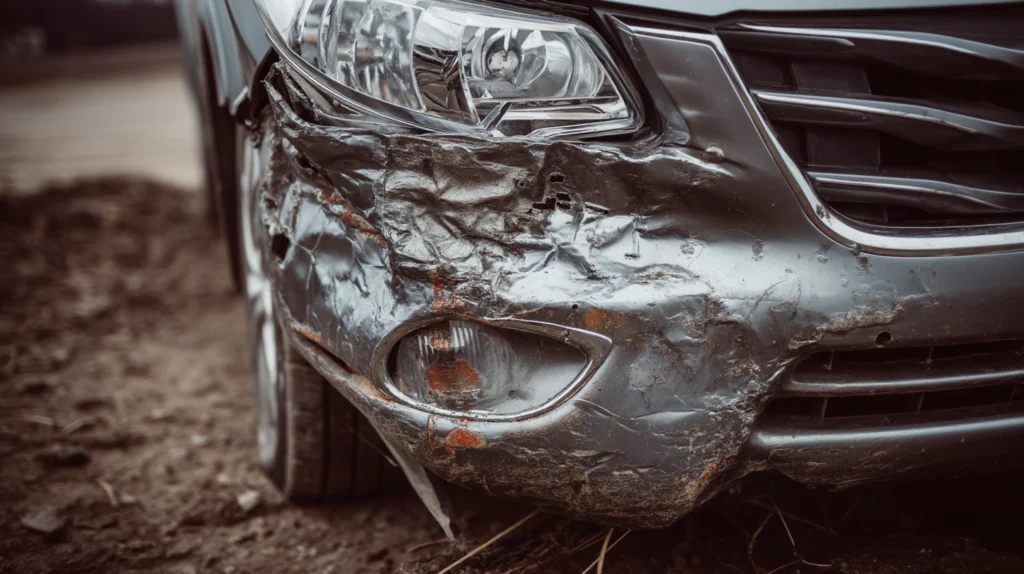What Drivers Should Know Before Getting Repairs
When your bumper gets damaged, the first thought is often that it only affects your car’s appearance, but today’s modern car bumpers do far more than add style. They help absorb impact, protect internal components, and support sensors that guide important safety features. Understanding how does bumper repair work gives you confidence when discussing repairs, choosing the best course of action, and protecting the value of your vehicle. At Re Lux Collision, we take every bumper repair process seriously, from the initial inspection to the final painting step, and we make sure every repaired bumper looks clean, performs correctly, and maintains your original paint job. Below is a complete explanation of how the repair process works and what you can expect when bringing your car to a professional auto body shop.
What Modern Bumpers Are Really Made Of

The Difference Between the Bumper Cover and the Impact System
Most vehicles today use modern bumpers made of a plastic bumper cover on the outside and an impact-absorbing system beneath it. The painted outer cover gives the bumper its visual shape and protects the underlying parts from dirt and weather. Behind the cover, you will find materials such as foam absorbers, brackets, bolts, and the metal reinforcement bar. Although the cover takes most visible damage like scratches, scuffs, dents, and chips, the structural components underneath can also be affected. Even a small damaged area on the outside can hide deeper issues in the absorber or reinforcement bar. This is why professional technicians always remove the cover when needed to access all components and determine the extent of the damage.
Common Plastic Types Used in Today’s Bumpers
Plastic bumpers are made from different materials including polypropylene, thermoplastic olefin, polyurethane, and sometimes carbon fiber blends. These plastics are flexible, aerodynamic, and designed to return to their original condition after minor impacts. Each plastic type reacts differently to heat, sanding, adhesives, and plastic welding. Choosing the correct repair methods and tools depends on the type of plastic the bumper is made of. A technician must identify the plastic material to ensure any repairs carried out will last, maintain strength, and hold new paint correctly.
How ADAS Sensors Affect Bumper Repair
Many modern vehicles include sensors inside the bumper cover that support safety features such as radar detection, parking assist, blind spot alerts, and collision avoidance. These sensors require precise alignment and unobstructed paths to function correctly. Any repair process that includes sanding, painting, or filling damaged areas near sensor zones must be done carefully so the sensors still read properly. If filler or primer is applied incorrectly, the bumper’s ability to send or receive signals may be affected. This is why a professional repair shop performs diagnostic scans before and after repairs to confirm that all sensors operate as intended.
Types of Bumper Damage and What’s Usually Repairable
Cosmetic Damage
Cosmetic damage includes scratches, chips, scuffs, paint fading, surface cracks, and minor dents. These are usually repairable because they do not affect the entire bumper structure. A professional technician can sand the damaged area, apply filler, and refinish the surface so it looks like the original paint job. Cosmetic bumper repair focuses on restoring appearance while maintaining the smooth, clean finish that matches the rest of the car.
Structural or Two-Sided Damage
Structural damage involves cracks that pass through the entire bumper, torn mounting tabs, holes, deeper dents, or damage that distorts the bumper’s shape. When a damaged bumper has deep cracks or holes, the repair process often requires plastic welding, reinforcement mesh, or heavy-duty adhesives to rebuild strength. Many plastic bumpers can be repaired even when structural damage exists, as long as a trained technician uses the correct tools and materials.
When Replacement Makes More Sense
In some cases, replacement is the best course. If the damaged area is near sensors, if the reinforcement bar is bent, or if the absorber has been crushed, the bumper should be replaced to protect vehicle safety. Severe cracks or twisted shapes that cannot be restored also call for a new bumper. Replacement may cost more money upfront, but it protects the long-term performance of the vehicle and ensures the bumper functions as designed.
Step by Step, How Bumper Repair Works at a Professional Collision Center

Step 1: Inspection, Diagnostics, and Damage Mapping
The bumper repair process always begins with a detailed inspection. A trained technician looks at the visible damage, checks the bumper alignment, and examines the paint surface for chips or cracks. If needed, the bumper cover is removed so the technician can inspect the absorber, metal reinforcement bar, brackets, bolts, and sensors. Modern vehicles require pre-repair scans to identify any warning codes that may have been triggered. Mapping the damage helps determine whether the bumper should be repaired or replaced.
Step 2: Cleaning, Degreasing, and Surface Preparation
Before any repairs begin, the bumper must be thoroughly cleaned. Dirt, wax, old paints, oils, and silicones are removed because they can affect adhesion. The technician sands the damaged area and scuffs the surrounding surface to create the proper texture for fillers and primers. Clean preparation is essential because even the best materials will not stick to a contaminated surface. This step sets the foundation for a seamless repair.
Step 3: Identifying the Plastic Type
Each bumper has a small marking inside that shows the plastic type. The technician uses this information to determine which methods are safe. For example, some plastics accept heat, while others cannot be heated without warping. Some plastics bond well with adhesives while others require plastic welding. Identifying the material guarantees that the repaired bumper remains strong and durable.
Step 4: Choosing the Right Repair Method
Once the technician understands the type of damage and the plastic material, the correct method is selected. Options include cosmetic repairs for scratches and small cracks, two-sided repairs for larger cracks and holes, and tab or bracket repairs for mounting points. If the damage affects safety systems or cannot be restored safely, the bumper is replaced with a new bumper to protect the vehicle.
Step 5: Cosmetic Repair Process for Scratches, Scuffs, and Small Dents
Light Sanding and Feather Edging
The technician sands the damaged area, removes the clear coat where needed, and feather edges the repair zone into the surrounding surface. This helps achieve a smooth transition that will not show through paint.
Adhesion Promoter and Flexible Filler Application
Once the bumper is sanded, an adhesion promoter is applied to help filler and primer bond to the plastic. Flexible filler is used to rebuild low spots or fix cracks. After curing, the filler is shaped to restore the bumper’s original contour.
Sanding, Priming, and Surface Smoothing
The technician sands the repaired area again to remove high spots and create a smooth surface. Primer fills micro imperfections and prepares the repaired bumper for paint. Guide coats are used to check the surface for flaws.
Color Matched Painting and Clear Coat Application
Painting is carried out in a controlled paint shop using precise color software and matched paints. The repaired bumper receives basecoat and clear coat to protect the finish and match the surrounding areas. New paint must blend smoothly into the original paint job for a seamless repair.
Step 6: Structural Repair for Cracks, Holes, and Tears
Backside Preparation and Reinforcement
For structural repairs, the technician works from the backside to strengthen the damaged area. A V groove is created along the crack, and reinforcement such as mesh or adhesive is applied. Plastic welding may also be used to weld broken sections together and rebuild strength.
Frontside Repair and Shaping
After reinforcement, the front of the bumper is repaired. The technician sands the surface, fills any holes or cracks, and shapes the repaired area to restore the bumper’s shape.
Final Refinishing
Once structural repairs are complete, primer, paint, and clear coat are applied to achieve a smooth, consistent finish.
Step 7: Reassembly, Alignment, and Final Checks
Ensuring All Mounting Points Hold Proper Strength
The bumper is reinstalled using the correct bolts and brackets. The entire bumper is checked for proper alignment and secure fit.
Post Scan and Sensor Calibration
Vehicles with sensors need a final diagnostic scan. If any safety features were affected, calibration is carried out to ensure everything works correctly.
How Long Does Bumper Repair Take

Cosmetic Repairs
Most cosmetic bumper repairs take one to three days depending on the size of the damaged area and the painting process.
Structural Repairs
Structural repairs require more time due to curing, sanding, painting, and shaping. These typically take two to four days.
Replacement Timelines
Replacement depends on part availability and the complexity of the vehicle. A new bumper requires painting, drying time, and possible calibration.
How Much Does Bumper Repair Cost
Cost Factors
The cost depends on severity, materials, labor, sensors, and the type of paint used.
Repair vs Replace Cost Differences
Repair is usually less expensive, but replacement is sometimes needed for safety or structural reasons.
Understanding Insurance Coverage
Most bumper repairs can be carried through insurance depending on the policy and deductible. Technicians help determine the best course based on your situation.
Should You Repair or Replace Your Bumper
When Repair Is the Smart Choice
Minor cosmetic damage, small cracks, or scuffs not affecting sensors can usually be repaired.
When Replacement Protects Your Safety
When the bumper is severely cracked, twisted, or cannot be restored safely, replacement is recommended to protect the vehicle.
How Re Lux Helps You Decide
We guide you through your options, explain every step, and help you make choices that protect your vehicle and your money.
Why Professional Bumper Repair Matters
Safety Considerations
A damaged bumper can affect how a vehicle absorbs impact. Professional repairs restore the design intended by the manufacturer.
Vehicle Value and Appearance
A smooth paint match protects resale value and overall appearance. Incorrect paint can fade, peel, or damage the surface over time.
Warranty, Training, and Materials
Quality materials and trained technicians ensure the repair lasts and that the bumper looks and performs like new.
When to Choose Re Lux Collision for Bumper Repairs

Our Experience with Modern Plastic Repairs
We understand how plastic bumpers behave and use the right tools for long-lasting repairs.
Precision Paint Matching and Finish Quality
Our paint shop uses advanced paints and techniques to match the finish and restore your car’s original condition.
OEM Focused Repair Decisions
We follow the proper repair process and focus on safety every time we repair a damaged bumper.
Customer First Service and Clear Communication
We explain the repair process, give clear expectations, and focus on achieving a seamless repair.
Call to Action
Get your free estimate today. Schedule a visit or contact our team and we will help restore your vehicle to its original condition.
FAQ, Bumper Repair Questions We Hear Most
Is it better to repair or replace a bumper?
Repair works for minor damage, but replacement is needed for deep cracks or structural issues.
Can cracked plastic bumpers be repaired?
Yes, many cracks can be fixed using plastic welding and reinforcement depending on location and extent.
Will my paint match after bumper repair?
Yes, we use color matching and blending to achieve a consistent finish.
Does bumper repair affect my sensors?
It can if not done correctly, which is why calibration and post scans are essential.
How long does bumper repair usually take?
Repairs take one to four days depending on damage and materials.
Do I need to go through insurance?
Not always; many cosmetic repairs cost less than a deductible.
Can I drive with a damaged bumper?
Some damage is safe to drive with, but loose or cracked bumpers can be dangerous.
Does repairing a bumper lower resale value?
A properly repaired bumper does not affect resale value.
Do minor damages still need inspection?
Yes, even small impacts can affect internal parts.
How do I get a quote?
Contact our team or schedule a visit, and we will examine the damage and guide you through your options.
Final Takeaway
Bumper repair is a detailed process that requires the right methods, accurate painting, and skilled technicians. At Re Lux Collision, we use careful techniques, quality materials, and a full understanding of modern bumpers to restore your car with confidence. If you have a damaged bumper, visit us for a full inspection and a seamless repair that protects your vehicle and enhances its appearance.




